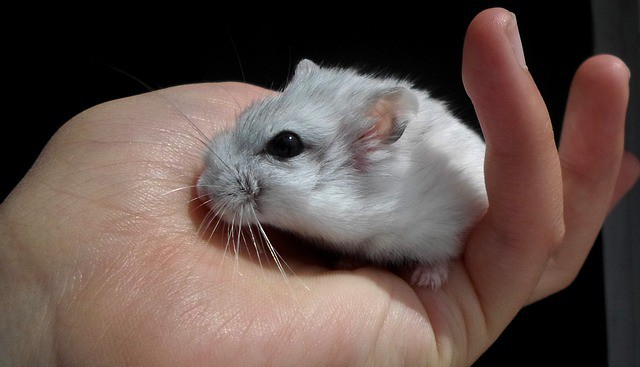Hamsters are those pretty creatures that are extremely cute, social, and joyful. While most of you might raise them in a territory, you might still have a doubt on how high can hamsters jump due to safety concerns.
Irrespective of how well you maintain your place, safety precautions are critical and that’s the reason you need to know heights to prevent falls and enhance the safety level. In this article, I will answer the jumping height of hamsters (of varied breeds) and tips to enable safe jumps.
How high can hamsters jump?
Hamsters can jump 8-15 inches from the base of the cage and in rare cases, they jump at a height lesser than that because of the feet structure. Dwarf hamsters jump below 10 inches while other hamsters can jump up to 15 inches.
Most hamsters can only jump around 9 to 10 inches in the air. This may seem low but it is actually quite impressive given their size. It is quite common to see hamsters jumping in single-digit height values because of their size and feet structures. However, they are stern and tend to use this ability to escape danger or to get to food or water. Some hamsters, like the Campbell’s Russian dwarf hamster, are able to jump a bit higher than others but the average is still around 10 inches.
There are other hamster breeds like Syrian hamsters that are slightly bigger in size and grab the strength to jump slightly higher than dwarf hamsters. However, the difference is only a few inches.
So the next time you see a hamster, whether in the wild or in a pet shop, remember that even though they are small, they can jump pretty high!
If you are still trying to calculate the exact height, here is a tip for you. Thanks to their fast and powerful back legs, they can jump almost 3 times their height to get away or reach food.
How high can a dwarf hamster fall and survive?
Dwarf hamsters can fall and survive at a height of 8 inches while Syrian hamsters can withstand up to 12 inches.
It is habitual for hamsters to fall from a height while they are playing with their mates. Since they are fragile, falling from a height can certainly be dangerous. As a hamster parent, you must be aware of the point that falling is different from being dropped.
When it comes to falling, they tend to jump from nearer spaces that are less than two feet. Accidental falls within the said levels are manageable. However, dropping them from any height is dangerous. Especially, dwarf hamsters are already too tiny and they cannot withstand the force and momentum at which they are dropped to the floor.
Even if you are planning to drop your hamster on the bed, it is better to avoid it since you may put their lives at risk without your knowledge.
So, the next time your little one tries to escape by climbing up the curtains, remember that he can only go as high as 8 inches without putting his life at risk! Make sure to keep your curtains and furniture secured to avoid any accidents. And always remember to supervise your pet when he’s out and about.
If your hamster poses any issues like losing weight after falls, here is a guide to follow – why is my hamster losing weight?
Can a dwarf hamster die from a fall?
A dwarf hamster, that falls from a height over 8 inches is likely to get injured and with greater force or height, he can also die. Ground surface, height, and physical condition of dwarf hamster influence the likelihood of death.

If a dwarf hamster falls from a height that is high enough, then it could potentially die from the fall. However, if the fall is not too high, then the dwarf hamster may be just fine. It is important to keep in mind that dwarf hamsters are small, which means that the force of impact would be higher relative to their size compared to a larger animal.
For example, if a large dog fell off the second floor of a building, then they are likely to survive because their bodies are larger and thus have more cushioning from external forces applied to them. However, since dwarf hamsters are smaller, they do not have as much cushioning and can potentially die from a fall that is not too high if the landing is hard enough.
Bottom line: a dwarf hamster can potentially die from a fall, but it depends on the height and other factors. Always be careful when your dwarf hamster is out of their cage, and make sure they have a safe place to play and explore!
Tips to make your hamster jump high
If your hamster is not jumping at the baseline level, it also means that you need to follow a few tips. While it is not mandatory for hamsters to jump high, it is a good way to tell them about their capabilities.
Got a new hamster? Not sure how to make your hamster jump high? Here you go!
- One thing you can do is put some treats on top of a box or other object. Your hamster will naturally want to get to the treats, so he or she will jump up to get them.
- You can also try putting your hamster in an exercise ball and rolling it around. This will make your hamster move around and jump up in the air.
- Finally, you can also try playing catch with your hamster. Throwing a small object near your hamster and then catching him or her will make him or her jump up in the air.
These tips work well in increasing the jumping height but remember not to practice him/her above prescribed levels of height.
Is it OK for my hamster to climb the bars of their cage?
Letting hamsters climb the bars of their cage is completely safe as long as their surfaces are not slippery and the entire place is covered.
Hamsters are small, playful creatures that love to explore their surroundings. This can sometimes include climbing on the bars of their cage. While it is generally safe for hamsters to climb the bars of their cage, there are a few things you should keep in mind.
- First, make sure your hamster’s cage has a solid floor. If the floor is wire or mesh, your hamster may injure their legs or feet by attempting to climb the bars from the outside. The same goes for aquariums without a solid bottom.
- In addition, make sure there are no other hazards in your hamster’s cage that could cause an injury. For instance, if you use a wheel with spots for the animal to put their feet, make sure your pet’s feet are not slipping through the spaces.
Important note.
Also know that some hamsters are better climbers than others, so you may need to restrict your companion’s access to climbing opportunities. Due to the size of most hamster cages, this usually is little more than restricting access to the top of the cage.
In the process of improving the protection level, you should also ensure the right elements around. We have a guide here addressing plants – are succulents good for hamsters?
So, overall, it is safe for hamsters to climb the bars of their cages as long as you take precautions to make sure they are safe. Just be sure to keep an eye on your furry friend and adjust their environment as needed to keep them healthy and safe.
How can I make my cage safe for my bar climbing hamster?
Bar climbing hamsters are very interesting. In the wild, they live in high-up areas and have to constantly climb up trees and jump from branch to branch. Because of this, it is only natural for a bar climbing hamster to spend a lot of time on bars. However, this may also lead to escapes or worse dangers such as injuries or illness.
Here are several ways in which you can ensure your bar-climbing hamster is kept safe in their home:
1. Make sure the bars on your cage are solid with no openings or parts that can be chewed through.
2. If you have a wire cage, cover the bottom with a solid layer of material that your hamster cannot chew through, such as cardboard or wood.
3. Place the cage in a safe location where it is unlikely that your hamster will be able to escape.
4. Check the condition of the bars regularly and replace any that are damaged or starting to rust.
5. Provide plenty of toys and activities to keep your hamster busy so they don’t spend too much time on the bars.
6. Monitor your hamster’s behavior and look for any signs that they may be getting injured or sick from spending too much time on the bars.
7. If your hamster is having problems, you might want to consider providing them with another type of cage that isn’t as tall or one that has more tunnels to explore instead of just bars.
By following these steps, you will be able to keep your bar-climbing hamster safe and healthy in their home. Have fun watching them explore their new surroundings!
Final thoughts
Hamsters are lovable creatures that can jump up to 8-15 inches based on their breed types. The only condition is to ensure that they don’t fall or be dropped from such heights since it can result in injury or turn fatal.
Having multiple hamsters at home? You should administer the environment and maximize safety precautions as much as possible so your hamsters are safe and still enjoy their activities.


